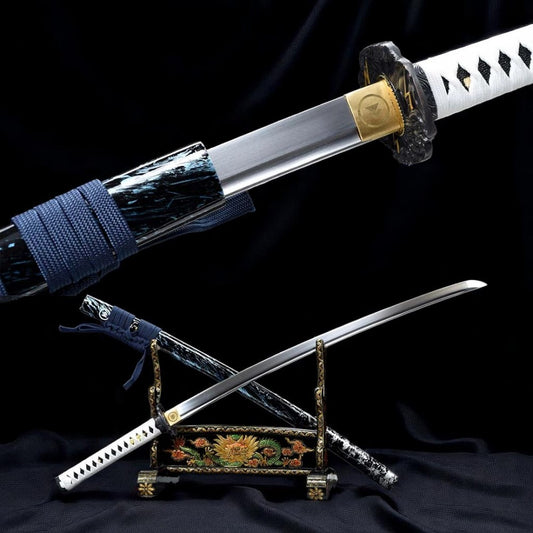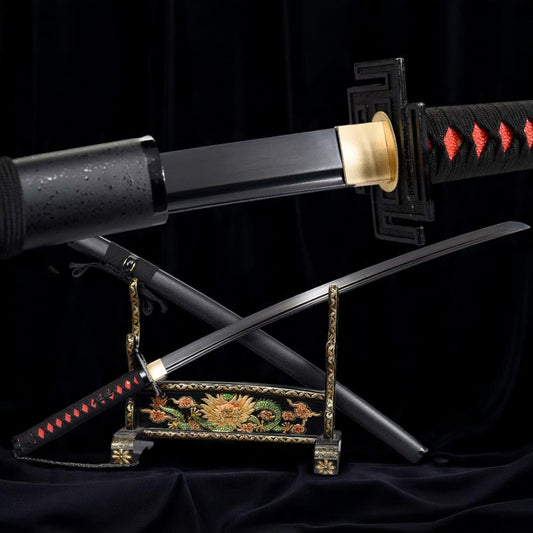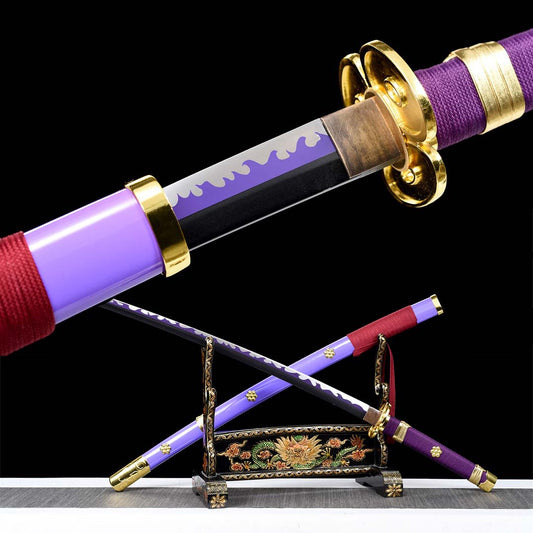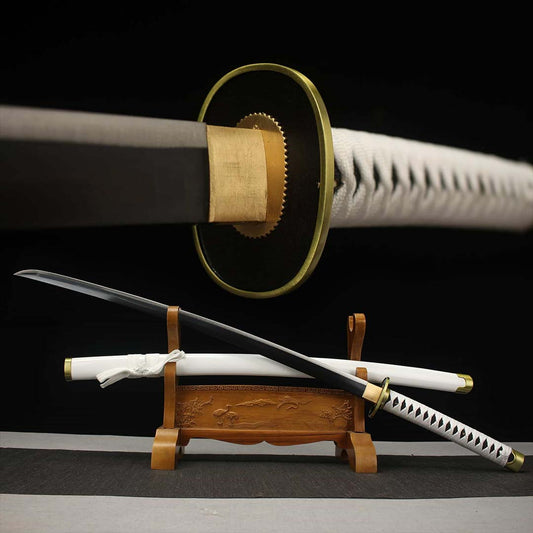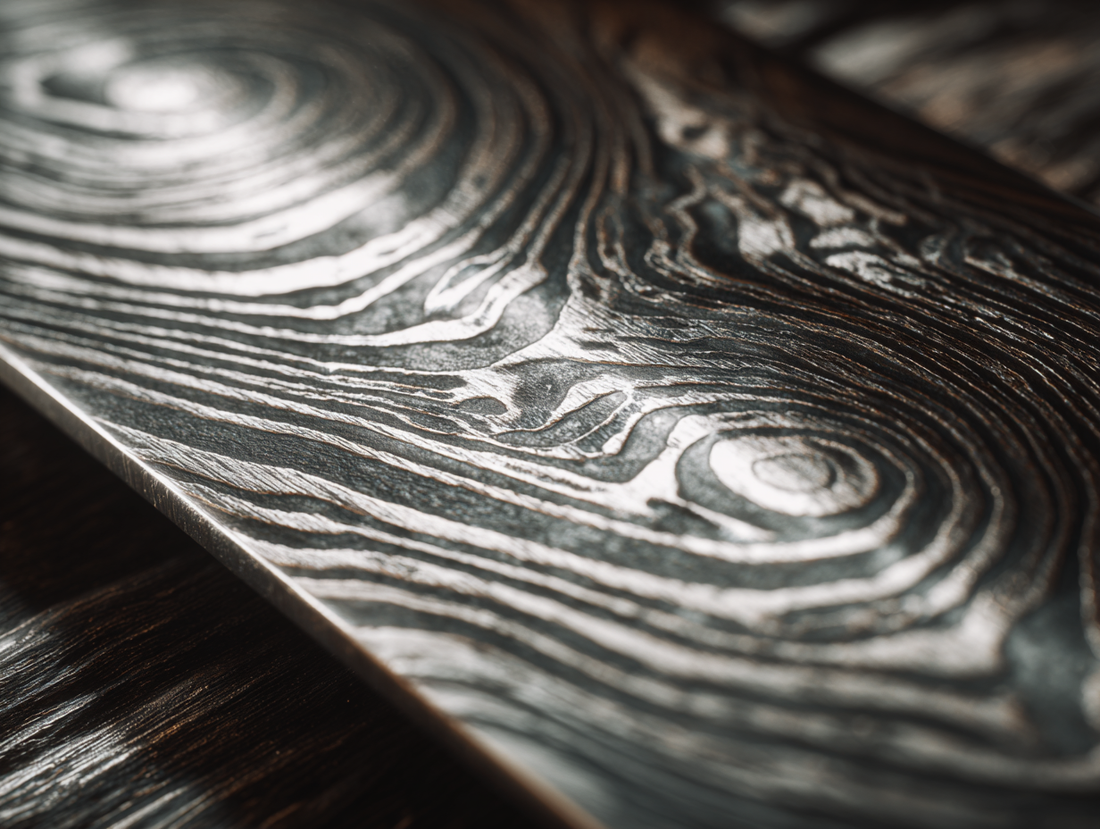
Choosing the Steel
Share
Introduction
When choosing a katana, one of the most important decisions you’ll make is the type of steel used in the blade. Steel impacts everything: sharpness, durability, flexibility, aesthetics, and price. In this guide, we compare the four most common steels found in modern katanas — 1060 Carbon Steel, 9260 Spring Steel, T10 Tool Steel, and Damascus — so you can make the right decision based on your needs and budget.
Quick Summary: 1060 = budget & balance, 9260 = flexible for training, T10 = pro-level sharpness, Damascus = visual artistry.
1. 1060 Carbon Steel – Balanced and Reliable
Composition: High-carbon steel with 0.60% carbon content. Characteristics: Good edge retention, easy to sharpen, and slightly flexible. Best for: Beginners, display, occasional practice.
1060 is a classic choice that delivers performance without breaking the bank. It’s ideal for those looking for a well-rounded blade with cutting ability and durability.
👉 See a 1060 Carbon Steel Katana
2. 9260 Spring Steel – Built for Impact
Composition: Silicon-alloy spring steel. Characteristics: Extremely flexible and resistant to breaking under stress. Can bend and return to shape. Best for: Cutting practice, martial arts, outdoor use.
9260 katanas are designed to take abuse. They’re popular with practitioners who value structural integrity over polish or edge retention.
3. T10 Tool Steel – Precision and Hardness
Composition: Tungsten-alloy high-speed tool steel. Characteristics: Very hard, excellent edge retention, strong hamon line. Best for: Advanced users, collectors, precision cutting.
T10 is prized for its clean cuts and razor-sharp finish. It requires careful handling and maintenance, but delivers top-tier performance.
4. Damascus Steel – Unique and Decorative
Composition: Multiple layers of steel forge-welded together. Characteristics: Distinct wave-like patterns, good hardness and flexibility depending on the core. Best for: Collectors, display, aesthetic appeal.
Damascus steel is visually stunning. While performance varies based on its internal core, it’s often chosen for its symbolic value and individuality.
How to Choose the Right Steel
| Steel Type | Edge Retention | Flexibility | Ideal For |
|---|---|---|---|
| 1060 Carbon | ★★★☆☆ | ★★★☆☆ | Beginner, multipurpose |
| 9260 Spring | ★★☆☆☆ | ★★★★★ | Practice, outdoor, rugged use |
| T10 Tool | ★★★★★ | ★★☆☆☆ | Experienced, collectors |
| Damascus | ★★★☆☆ | ★★★☆☆ | Display, art, light cutting |

Conclusion
Choosing the right katana steel depends on your goals. If you’re a first-time buyer, 1060 offers a reliable entry point. If you plan on cutting regularly, 9260 may be your best ally. For pure sharpness and edge control, T10 is unmatched. And for those who want a piece of art, Damascus delivers elegance with edge.
Explore all our blade options in the Katana Customizer or browse our full Katana Collection.


